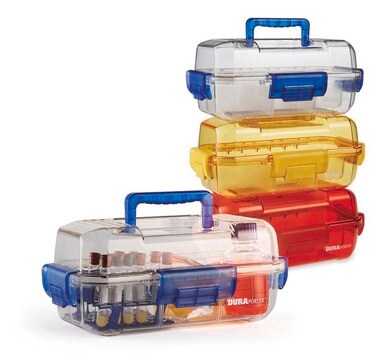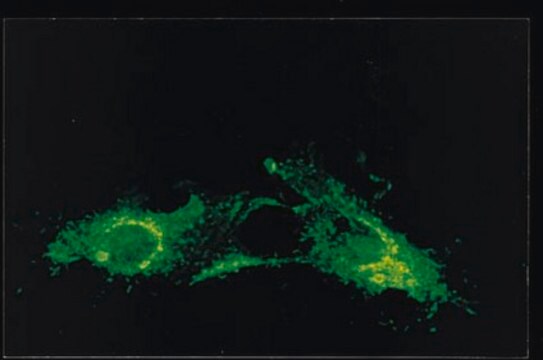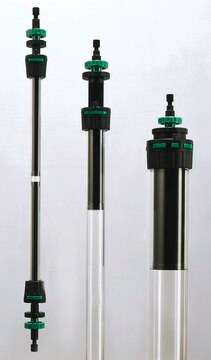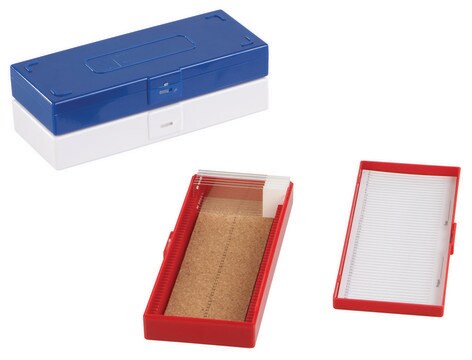General description
Glycoprotein (UniProt: P03524) of Rabies virus of Evelyn-Rokitnicki-Abelseth (ERA) strain is encoded by the G gene. Rabies virus belongs to the Lyssavirus serogroup of viruses. The glycoprotein of Rabies virus is a homotrimer, single-pass type I membrane protein that attaches the virus to host cellular receptor and thereby inducing endocytosis of the virion. In the endosome, the acidic pH induces conformational changes in the glycoprotein trimer, which trigger fusion between virus and cell membrane. It has been shown that the nicotinic acetylcholine receptor (nAChR), the neuronal cell adhesion molecule (NCAM), and the p75 neurotrophin receptor (p75NTR) bind glycoprotein and facilitate Rabies virus entry into cells. Arginine 352 is considered to be highly involved in Rabies virus pathogenicity and a mutation at this site dramatically attenuates the virus. Rabies virus glycoprotein is synthesized with a signal peptide (aa 1-19) that is subsequently cleaved off. It has two topological domains (aa 20-459 virion surface; 481-524 intravirion) and a helical domain (aa 460-480). Glycosylation of viral glycoprotein is considered to be crucial for glycoprotein export at the cell surface. Clone 802 is shown to recognize most Rabies virus strains, however it does not display neutralizing activity. (Ref.: Schumacher, CL et al. (1989). J. Clin. Invest. 84(3); 971-975; Bunschoten, H et al. (1989). J. Gen. Virol. 70(2); 291-298).
Specificity
Clone 802 detects Glycoprotein of Rabies virus (strain ERA). This clone does not display neutralizing activity in vitro.
Immunogen
Beta-propiolactone-inactivated Rabies Virus (ERA strain).
Application
Immunohistochemistry Analysis: A representative lot detected Rabies virus in CVS-24 infected mouse and normal mouse tissues (Courtesy of the Ertl Lab, Wistar Institute, Philadelphia, PA USA).
Research Category
Inflammation & Immunology
This mouse monoclonal Anti-Rabies virus, clone 802, Cat. No. MABF2038, is a mouse monoclonal antibody that detects glycoprotein of Rabies virus and has been tested for use in Immunohistochemistry.
Quality
Isotype testing: Identity Confirmation by Isotyping Test.
Isotyping Analysis: The identity of this monoclonal antibody is confirmed by isotyping test to be mouse IgG2b.
Target description
58.66 kDa calculated.
Physical form
Format: Purified
Protein G purified
Purified mouse monoclonal antibody IgG2b in PBS without preservatives.
Storage and Stability
Stable for 1 year at -20°C from date of receipt. Handling Recommendations: Upon receipt and prior to removing the cap, centrifuge the vial and gently mix the solution. Aliquot into microcentrifuge tubes and store at -20°C. Avoid repeated freeze/thaw cycles, which may damage IgG and affect product performance.
Other Notes
Concentration: Please refer to lot specific datasheet.
Disclaimer
Unless otherwise stated in our catalog or other company documentation accompanying the product(s), our products are intended for research use only and are not to be used for any other purpose, which includes but is not limited to, unauthorized commercial uses, in vitro diagnostic uses, ex vivo or in vivo therapeutic uses or any type of consumption or application to humans or animals.







